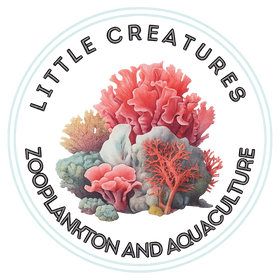✅ Benefits of Adding Rotifers
-
Excellent Live Food Source
- Ideal for larval fish, small-mouthed coral, mandarins, pipefish, and other micro-predators.
- Provides continuous feeding due to their slow swimming and small size (great for finicky eaters).
-
Supports Coral Health
- Many LPS and SPS corals can capture and feed on rotifers, especially during night cycles.
-
Improves Microfauna Diversity
- Can contribute to a more balanced micro-ecosystem, particularly in reef tanks.
-
Aids in Larval Rearing
- Crucial for breeding setups, especially marine fish larvae (e.g., clownfish).
⚠️ Potential Issues of Adding Too Many
-
Oxygen Depletion
- Heavy rotifer biomass can consume significant dissolved oxygen, especially at night.
-
Ammonia/Nutrient Spike
- Rotifers produce waste, and uneaten ones will die off, spiking ammonia, nitrite, or nitrate levels.
- Risk increases if you feed them heavily before adding.
-
Cloudy Water
- A large bloom can lead to turbid or milky water.
-
Competition
- May compete with other zooplankton or filter-feeders in your tank.
-
Short Lifespan
- Without ongoing phytoplankton, rotifers quickly die off in a day or two.
🧪 Best Practices When Adding Rotifers
- Acclimate slowly if you're adding a large amount.
- Rinse them with clean saltwater to reduce nutrient input from culture water.
- Add at lights-out to maximize coral capture.
- Pair with phytoplankton dosing to keep them alive longer and maintain water quality.

